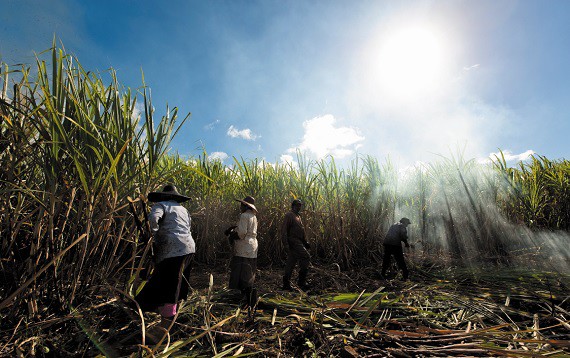An example of how artisanal rums are becoming a significant movement is Dos Maderas, a brand which blends aged rums from Guyana and Barbados.
It ages its rum in ex-bourbon barrels in the Caribbean before shipping it to Spain to be finished in ex-sherry casks. This is the level of detail which screams premium.
Gonzalo Medina, international marketing manager for the brand, believes this ageing process makes Dos Maderas a unique rum, which is an important trait for any brand sitting in the artisanal section.
Blacknell also points out that the big brands are selling well. Interestingly, this could give the category stability and therefore retain its popularity in the on-trade. Doyle from Bacardí is quick to point out the popularity of Ocho among bartenders. However, according to DI’s Annual Brands Report, Plantation rum is the top trending brand among the industry’s most influential bars. This shows that ultimately, artisanal is cool.
Augustin says he has seen a lot of smaller producers gain more traction in his bar and, in response to this, big brands are also launching or acquiring artisanal labels.
Bacardí’s Santa Teresa is gaining popularity in the on-trade and is proud to talk about the use of its solera process to speed up the ageing of its rum, a technique which has been criticised in the past for short-cutting barrel ageing.
As well as its willingness to bring clarity to its product, Santa Teresa offers a strong back story to its followers. Its Project Alcatraz was set up in 2003 to offer Venezuelan young offenders the chance to avoid prison time by working for free in the production of the rum, and joining the Project Alcatraz rugby team.
Augustin believes this artisanal movement will allow categories such as aged agricole to thrive this year and that its popularity will also benefit from its favourable market value compared to the top end of the scotch whisky category, which he says have reached “ridiculous levels”.
LAW & ORDER
One big issue hindering the organisation of the category’s premium sector is the global regulation of rum. The ongoing dilemma is how rum can be regulated in the same way that whisky or French spirits are.
The difficulty with this is that there are different brands which abide to the regulations in their home country and export their products overseas into a different set of regulations.
This makes it difficult to regulate what a rum is and what has to be declared on the label. During Bar Convent Berlin last year, global rum ambassador, Ian Burrell pointed out that certain brands are beginning to remove the word ‘rum’ from their packaging in an effort to avoid controversy when a product is exported to a country with different legislation.
Medina at Dos Maderas says: “Age statements provide a guarantee for the consumer, a way to certify the age of rums on the market produced under strict controls that accredit the ageing process employed by the category.”
Unless something is done to regulate what defines a rum, specifically in the premium sector, then brands will continue to blur the lines and this could potentially devalue top-end rums if the issues aren’t resolved.




